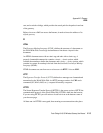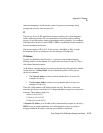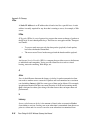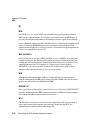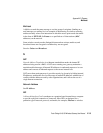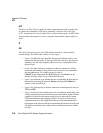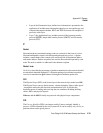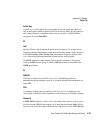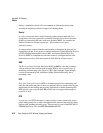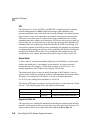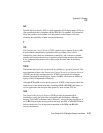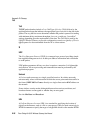Psion Teklogix 9160 G2 Wireless Gateway User Manual E-21
Appendix E: Glossary
Packet
• Layer 6, the Presentation layer, defines how information is presented to the
application. It includes meta-information about how to encrypt/decrypt and
compress/decompress the data. JPEG and TIFF file formats are examples of
protocols at this layer.
• Layer 7, the Application layer, includes protocols like hypertext transfer
protocol (HTTP), simple mail transfer protocol (SMTP), and file transfer
protocol (FTP).
P
Packet
Data and media are transmitted among nodes on a network in the form of packets.
Data and multimedia content is divided up and packaged into packets. A packet
includes a small chunk of the content to be sent along with its destination address
and sender address. Packets are pushed out onto the network and inspected by each
node. The node to which it is addressed is the ultimate recipient.
Packet Loss
Packet Loss describes the percentage of packets transmitted over the network that did
not reach their intended destination. A 0 percent package loss indicates no packets
were lost in transmission. QoS features are designed to minimize packet loss.
PHY
The Physical Layer (PHY) is the lowest layer in the network layer model (see OSI).
The Physical Layer conveys the bit stream - electrical impulse, light or radio signal -
- through the network at the electrical and mechanical level. It provides the
hardware means of sending and receiving data on a medium, including defining
cables, NICs, and physical aspects.
Ethernet and the 802.11 family are protocols with physical layer components.
PID
The Process Identifier (PID) is an integer used by Linux to uniquely identify a
process. A PID is returned by the
fork()
system call. It can be used by
wait()
or
kill()
to
perform actions on the given process.



